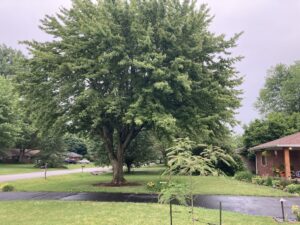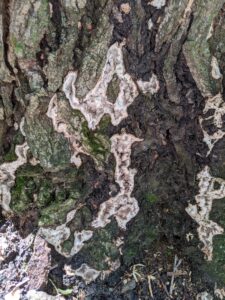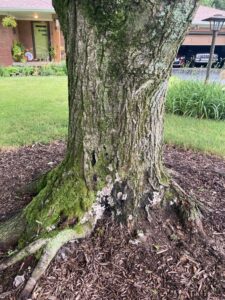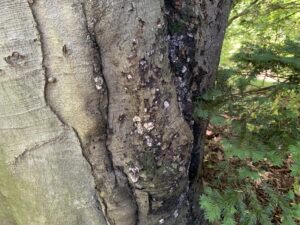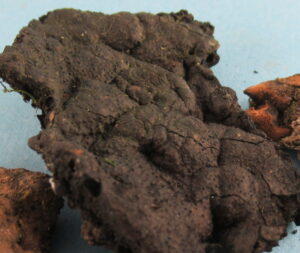
Figure 1
Brittle cinders and burnt crusts usually bring to mind bad baking experiments, but in this case they are common names for a highly destructive wood rot fungus: Kretzschmaria deusta. The names derive from the charcoal-like fungal fruiting structure (the stroma), where spores are produced (Figure 1).
Most wood decay fungi can be classified as causing either a white rot (decay of the lignin) or a brown rot (decay of the cellulose). This classification is important because trees affected by white rots may retain strength in the wood much longer than those affected by brown rot pathogens. Kretzschmaria deusta causes decay of both lignin and cellulose simultaneously, leading to a more rapid decline than caused by many other wood decay fungi; and increased risk of tree collapse.
Infected trees may appear completely healthy in the canopy (Figure 2), or may have decline symptoms, including small leaves and dieback. A look at the base of the tree usually shows bark cracking, bleeding cankers and may show decayed wood that appears bleached out. The fungus develops in patches on the bark with new growth ranging from gray to white at the margins and older structures becoming black with small bumps (where spore bearing structures will develop) (Figure 3).
- Figure 2
- Figure 3
Several types of trees are susceptible to infection by Kretzschmaria, including hickory, tuliptree, sycamore and oak; however, we see it most often on maple (Figure 4) and beech (Figure 5). The fungus spreads by airborne spores and usually invades trees with wounds or those under stress. From the time of infection until decay becomes obvious may require several years but by the time the fungus shows up significant decay may have already taken place and further decline may be more rapid.
- Figure 4
- Figure 5
Unfortunately, there are no effective treatments and infected trees will eventually die.
Reference: https://ag.umass.edu/landscape/fact-sheets/root-butt-rot-caused-by-kretzschmaria-deusta
Sinclair and Lyon, Diseases of Trees and Shrubs, 2nd Edition.
